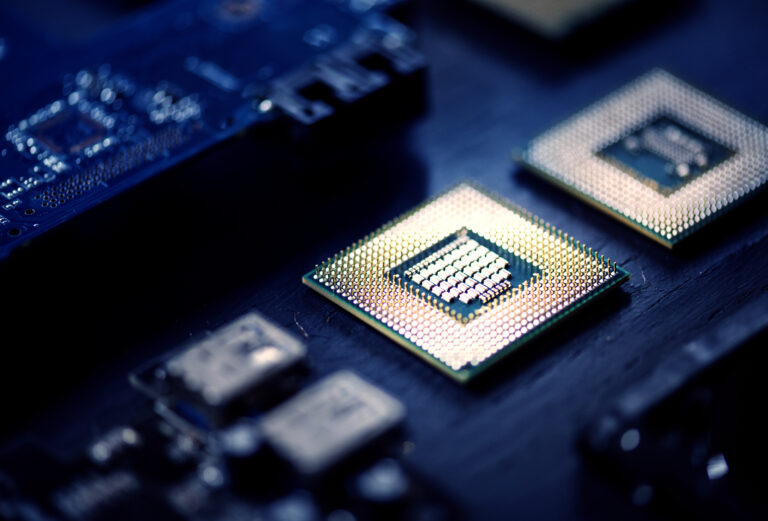
Microprocessor architectures lie at the core of computing. In this post, I share my thoughts on how these systems have evolved and why they matter today. While I’m not a hardware engineer, I’ve always been fascinated by how these tiny chips shape our digital lives.
As the tech world rapidly evolves, software often takes center stage—with better accessibility, reusability, and community support. In contrast, hardware development remains more closed, largely because microprocessor architectures and instruction sets are usually proprietary. That makes innovation harder and sharing limited.
In this article, we’ll explore the fundamentals of microprocessor design, the RISC vs CISC debate, and newer trends like ARM and RISC-V.
What Are Microprocessor Architectures?
A microprocessor architecture defines how a CPU is built and how its components interact. Acting as the brain of any computing system, a CPU is made up of several critical parts:
Key Components of a Microprocessor
🔸 Registers
Registers are the CPU’s fastest and smallest memory units. They enable quick access to instructions and data. Types of registers include:
MAR (Memory Address Register)
MBR/MDR (Memory Buffer/Data Register)
PC (Program Counter)
🔸 Control Unit (CU)
The CU acts like a traffic controller. It fetches instructions from memory, decodes them, and then routes them to the appropriate components for execution.
🔸 Arithmetic Logic Unit (ALU)
The ALU performs all math and logic operations. It takes input from registers, processes the instructions, and sends the result back for further use.
CISC Architecture: Complexity Made Easy for Developers
CISC (Complex Instruction Set Computer) processors use complex instructions to perform multiple tasks in one command. This reduces the number of instructions a program needs, which was beneficial when memory was limited and expensive.
🔑 Key Features of CISC:
100–200 complex instructions
Multi-cycle execution
Variable-length instruction formats
Advanced addressing modes
Hardware-heavy complexity
Shorter code, more energy usage
CISC made programming easier by shifting complexity to the CPU. It remains dominant in desktops and servers, especially with x86 architecture.
RISC Architecture: Simplicity for Speed
RISC (Reduced Instruction Set Computer) processors simplify the instruction set. Each instruction does just one thing, but very quickly. This makes the CPU easier to build and more energy-efficient.
🔑 Key Features of RISC:
30–40 simple instructions
Single-cycle execution
Fixed-length instruction formats
Emphasis on compiler optimization
More registers, larger codebase
Software-focused complexity
RISC has gained momentum with the rise of smartphones, IoT devices, and energy-efficient systems.
Performance Metrics in Microprocessor Architectures
To compare microprocessor architectures, we often use this formula:
CPU Time = Instruction Count × Cycles per Instruction × Clock Cycle Time
Instruction Count: RISC usually has more due to simpler commands.
CPI (Cycles per Instruction): Lower in RISC systems due to single-cycle execution.
Clock Cycle Time: Shorter cycles mean faster performance, but higher heat and power usage.
The balance between these variables defines how efficient and powerful a processor is.
Comparing x86 and ARM Architectures
Two industry titans dominate the CPU world:
🖥️ x86 (CISC-based):
Found in most desktops and gaming systems
Backed by Intel and AMD
Decades of backward compatibility
📱 ARM (RISC-based):
Powers mobile phones and tablets
Energy-efficient, scalable design
Gaining ground in laptops (e.g., Apple Silicon)
Apple’s transition from Intel (x86) to its own ARM-based M-series chips is a major signal of ARM’s growing role in high-performance computing.
RISC-V: The Open-Source Future of Microprocessor Design
RISC-V is an open-source alternative to ARM. Its instruction set is royalty-free and customizable, which makes it ideal for:
Startups
Academia
National security initiatives
While it may not replace ARM or x86 entirely—just as Linux didn’t replace Windows—it enables affordable, flexible chip design without legal hurdles.
Geopolitics and Chip Independence
Microprocessors are no longer just tech—they’re strategic assets.
The U.S. ban on Huawei exposed China’s dependency on foreign tech.
India, Russia, and China are now investing heavily in domestic chip design.
The global chip shortage revealed just how fragile the supply chain is.
This has intensified interest in open architectures like RISC-V and encouraged local production efforts.
Looking Ahead: RISC on the Rise
RISC-based architectures (ARM and RISC-V) are catching up fast. With growing demand for energy-efficient systems, expect to see:
More servers and desktops using RISC-based chips
ARM competing head-to-head with x86
RISC-V adopted in more niche and innovative applications
Still, CISC will remain relevant in legacy systems, gaming, and high-performance use cases.
Final Thoughts
Microprocessor architectures are evolving rapidly. Understanding the difference between RISC, CISC, x86, ARM, and RISC-V can help you better grasp the future of computing—from mobile devices to data centers.
To explore how our software solutions interact with modern processor architectures, check out our web development services.
Have thoughts or questions on processor trends? Contact us. Let’s talk.